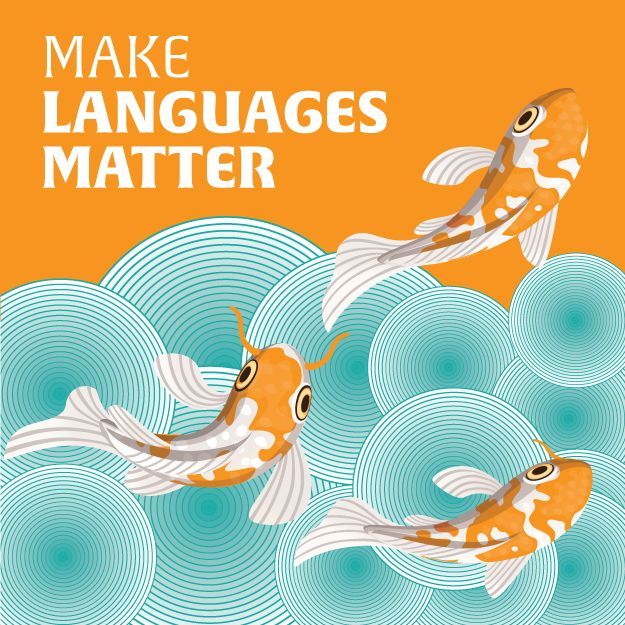Case Study 3
Starting a CLIL / Immersion program from scratch
My name is Kelsey and I currently work at a very large regional state high school in Queensland. Since 2019, I have been fortunate enough to lead the curriculum implementation of our CLIL/Immersion program.
I have spent most of the last nine years working at a school with approximately 2000 students, 140 plus full-time teachers, and approximately 70 support staff. The student and staff population at my school come from the most diverse cross-section of our community that you could possibly imagine.
I am extremely proud to belong to my school community because it produces some of the most outstanding academic, sporting, career, and cultural outcomes for students – not only in regional Queensland but also the state and, indeed, the country. In saying this, though, we are most definitely not a leafy green school, or based anywhere remotely close to a leafy green suburb.
Approximately three-quarters of our student population sits in the bottom two quartiles for socio-economics – with roughly 43% in the bottom quartile itself. As you’d expect with such a large and diverse student population at a regional school, we deal with a broad range of behaviours, levels of academic engagement, and attitudes toward education – particularly language education – from all fronts (students, parents, and the wider community).
The move to introduce a CLIL/Immersion program at our school began with an initial proposal in 2016 – a full three years before we welcomed our foundation cohort. The school has long been a leader in global education and academic excellence, and as such was seeking a new and dynamic program that could offer students in the regions something truly unique and enriching!
As the teacher in charge of developing the curriculum for our CLIL/Immersion program, my initial considerations were drawn from pedagogical research as well as my own previous experiences in one of Queensland’s most outstanding language immersion programs.
For context, I was fortunate enough to participate in a French Immersion program myself at high school, as well as completing all my practicums in an immersion setting. I know first-hand the truly phenomenal opportunities that such a program can provide – both academically and with respect to personal growth and development.
The initial curriculum planning process began in late 2018 with the design of our Year 7 work programs for French and Humanities. For our school, this comprises History, Geography, and Civics and Citizenship. The process was guided by the school’s commitment to delivering the Australian National Curriculum, and also conformed to our overarching pedagogical framework, Marzano’s The Art and Science of Teaching.
We decided that in Term 1, students would use their timetabled Humanities class time to do additional French. This offered an intensive introduction to the French language and the necessary forms and functions students would need to successfully access their Humanities coursework in Year 7. This also set them up for the introduction of a third learning area in Year 8 – a school-specific, multidisciplinary subject. Students would then revert to their allocated timetable for French and Humanities in Term 02 and for the remainder of Year 07 (210mins per curriculum area).
With this consideration in place, I worked on the development of the work program. This encompasses the units of study, the mapping of grammatical skills, the mapping of anticipated vocabulary, an outline of all assessment, as well as the alignment to the Standard elaboration statement.
For our Immersion/CLIL program, we follow the prep/foundation-entry standard elaborations rather than the Year 7 Entry standards to ensure students are not restricted to the prescribed language and themes presented in the latter. Since we do not follow the C2C unit mapping, I was able to select thematic units that prioritised both our school’s and our community’s priorities, including embedding indigenous perspectives and our relationship with our East-Side neighbours, all whilst allowing students to develop their language capabilities.
With respect to the initial planning for Humanities and our school-based subject, students in our CLIL/Immersion program complete the same depth studies and assessment as their mainstream peers. For this to be done authentically and successfully in terms of both content and language, I worked (and continue to work) closely with the subject team leaders for these subject areas. We identify the core priority standards for both skill and content, and develop our units from there.
As we don’t follow a textbook in the mainstream Humanities or school-based subject programs, students in our CLIL/Immersion program have all their content-based learning resources developed and designed expressly for them. This has proven to be time-consuming in the early days of our program’s roll out, especially as our assessment continues to be refined to allow students to better demonstrate their competencies against the appropriate standards.
However, ultimately the decision not to follow a translated textbook has proven to be extremely successful with respect to the development of language and content-based skills – especially the historical skills – and the students’ overall academic results.
Introducing and sustaining such a program isn’t without challenges. As the program we offer at our school is the only one of its kind in the region, there isn’t a great deal of community understanding about what CLIL/Immersion is and the great benefits that it provides for students. We have worked extremely closely with our feeder primary schools to build the profile of the program with students and their parents, thanks to some amazing support from the French teachers at these schools.
Our CLIL/Immersion program is open to all who can demonstrate a strong work ethic through their primary school reports, and who can complete a short application form where they articulate their desire to join the program. We have welcomed students from the full spectrum of academic achievement –from students who are straight A+ across the board and have been since kindergarten, to students who engage with literacy and learning support for the majority of their subjects. It is our commitment in our program to make learning in language accessible to everyone.
Surprisingly (or unsurprisingly to those familiar with using the CLIL approach), our students recognise success in the program irrespective of their “typical” academic progress. Additionally, the support of the school’s admin has played a vital role in promoting the importance of learning language and access every opportunity whilst living in the regions. Overall, we have found that parents and guardians of our CLIL/Immersion students are extremely pleased with what the program offers their children, and are excited to see how such a program can help them grow into the global citizens that our school is so proud to produce.
I understand that I approach CLIL/Immersion education from a truly unique and privileged position that isn’t afforded to all. I was educated in an Immersion setting. I did my teacher training in an immersion setting. I have led the curriculum development of a CLIL/Immersion program from its absolute foundations. Learning in language is all that I have ever known. However, if I could offer any advice for language teachers out there, it is that using CLIL pedagogy is the game changer we need in our curriculum area.
We know that in Queensland a staggering and truly heartbreaking 93% of Year 12 students don’t do a language in their ATARs. However, in my school’s context, we have over 90% of our Immersion students choosing to continue with their language studies post-program. There is nothing (left) to lose in incorporating CLIL units in your instruction, but there is a great deal at stake if we don’t start to see more students enrol in senior languages.
If you’d like to know more about CLIL, send your questions to
kelly@languagesroadshow.com.au


